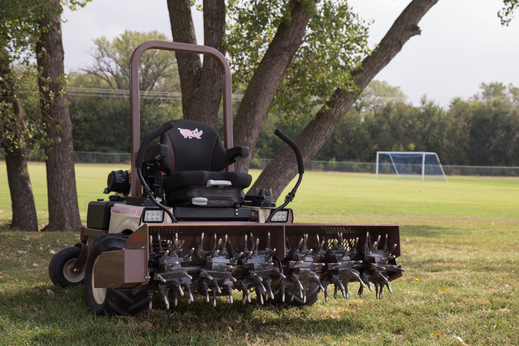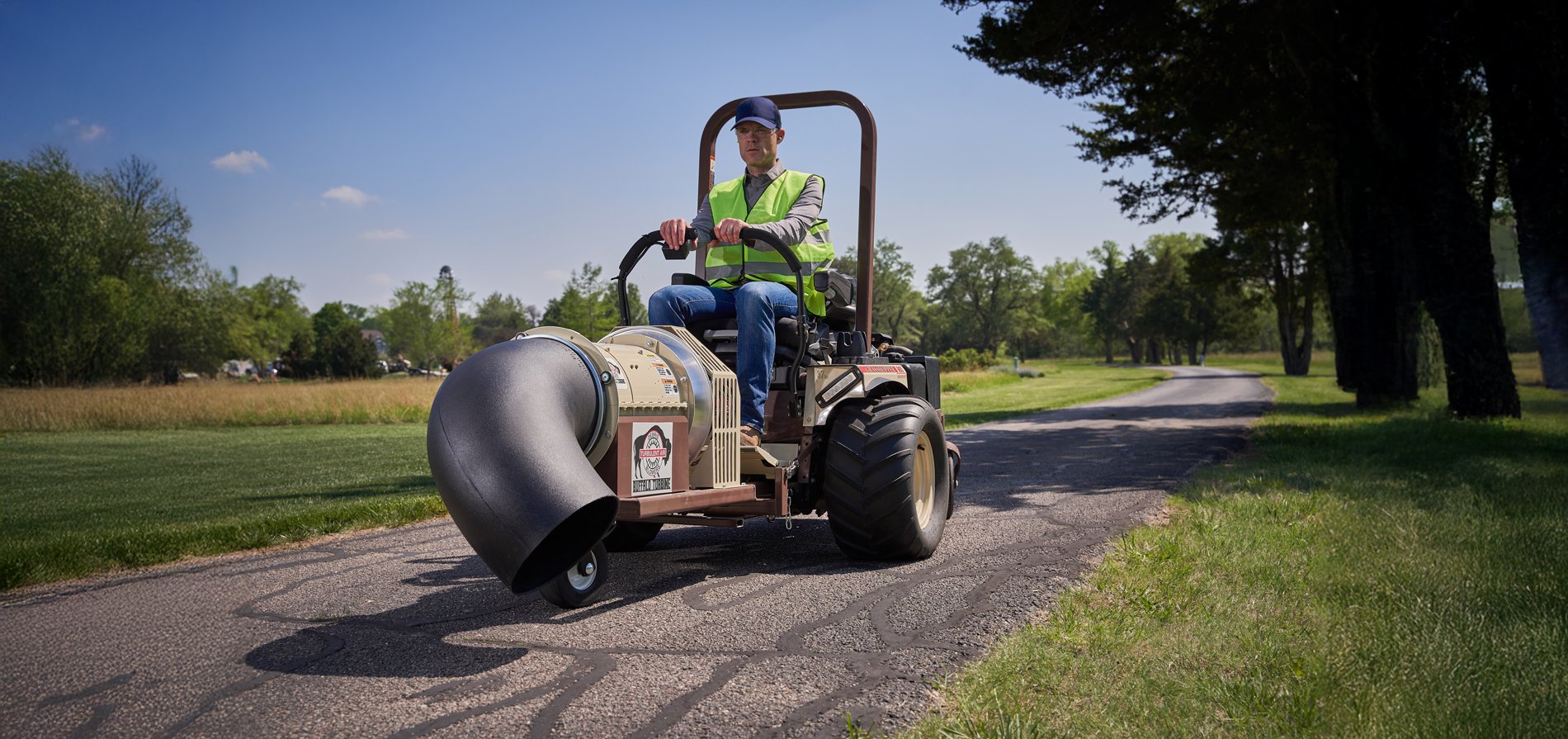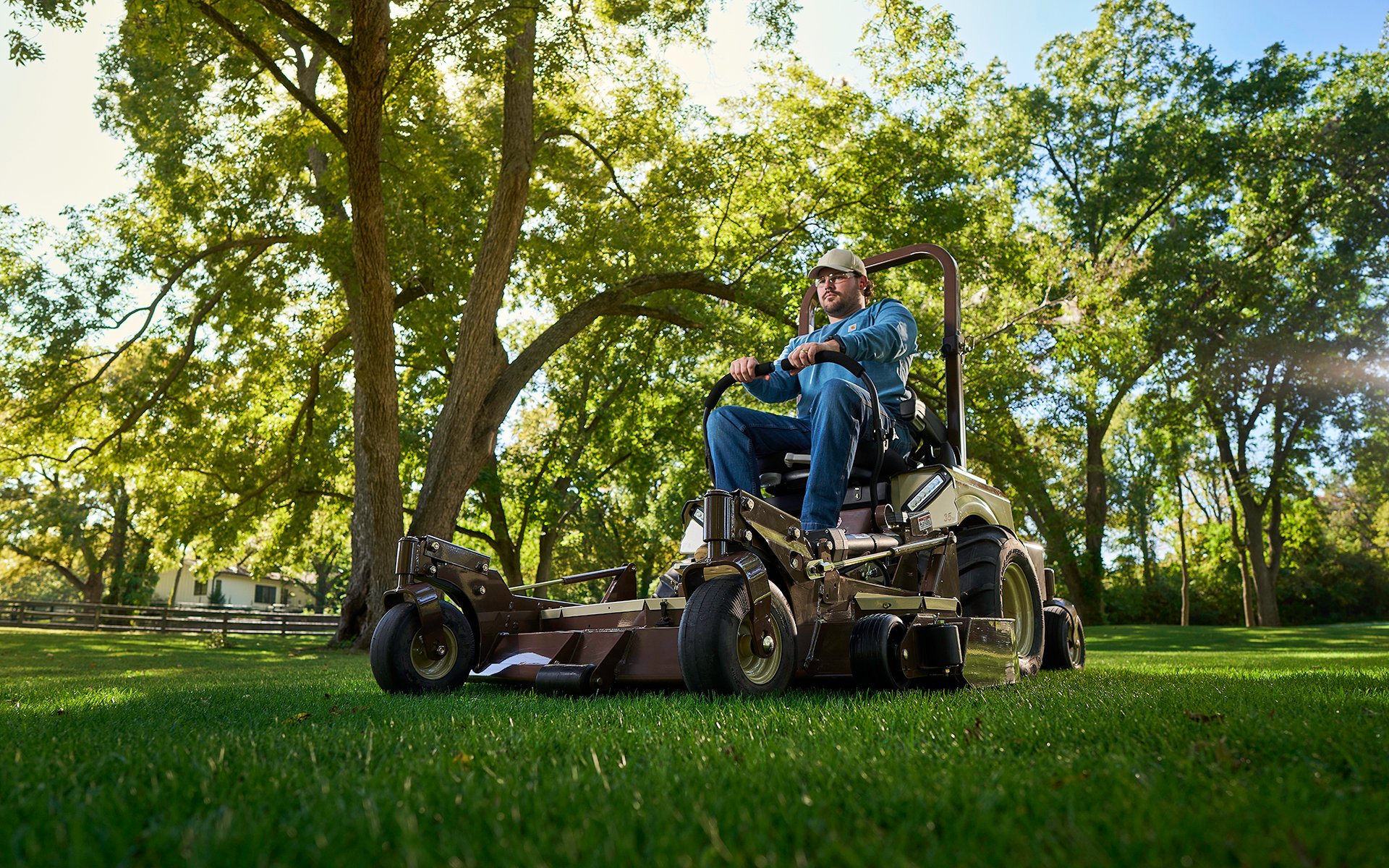It was country music star Luke Bryan who once sang, “Rain is a good thing.” Generally speaking, he’s 100% right. But sometimes Mother Nature throws too much water your way, maybe even causing floodwaters from rivers, creeks and ponds to reach your fields and farm. As badly as you want to get back out there and fix things up, you know you can’t fire up the tractor immediately after those floodwaters recede.
The same is true with respect to your lawn.
A lawn tractor will often weigh upward of 500 pounds. A rugged zero-turn mower often weighs much more than that – up to 1,700 pounds. Once you add a 200-pound operator, the overall weight can climb to nearly 1 ton, depending on the model you’re using. Putting that kind of weight on soft ground will compact the soil and likely leave ruts all over the place. And if the grass is still wet, it will likely get torn up. All in all, attempting to mow your lawn too soon after a flood will do more harm than good.
You can still get a head start on your lawn recovery, though. Here’s how.
Pick things up
Once the grass has dried out a little, take a stroll through the lawn and pick up any rocks, larger sticks, litter and other debris that may have settled there. If your lawn was a recipient of floodwaters, you never know what kind of contamination may have washed in. Be sure to wear long pants and a long-sleeve shirt, along with waterproof boots and gloves. It’s a good idea to make sure those gloves are cut-resistant too, since you could encounter sharp objects like glass and metal. Proper eye protection is also never a bad idea.
Perk things up
Once the grass is dry and the ground has firmed back up, there may be quite a bit of sand on your lawn. You could probably handle this step with some elbow grease and a rake. But if that silt layer is upward of an inch thick, you could benefit from a power broom. Many rental centers offer walk-behind units. Just make sure the bristles are designed for delicate surfaces like lawns.
Another option, if you happen to have a Grasshopper FrontMount™ mower, is a Grasshopper CleanSweep™ Rotary Broom. This attachment could prove to be a valuable investment due to its all-season versatility. A CleanSweep Rotary Broom can help clean up lawn debris every spring, clear snow in the winter, and take care of a variety of messes around the property all year long. For post-flood lawn recovery, it’s an efficient way to disperse all of that silt that may have washed in. A CleanSweep Rotary Broom will also fluff up matted-down grass, and even function as a highly effective dethatcher.
If you don’t end up using a power broom of some kind, dethatching the lawn is an important next step. Dethatching will help perk the lawn back up while removing the thatch layer. This will allow much-needed air, sunlight and nutrients to reach down into the soil so the lawn can start recovering more efficiently. Grasshopper offers two sizes of Tine-Rake™ Dethatchers, 46 and 60 inches, that can be attached to Grasshopper FrontMount mowers.
Mow, grow and sow
Once your lawn has dried out and been perked back up, it’s safe to begin mowing and furthering the recovery process.
The grass could be pretty long at this point, and it’s important to resist the urge to mow too short. There’s a method to mowing an overgrown lawn so you’re not removing too much grass at once. As a general rule, you want to maintain a grass height of anywhere from 3 to 4 inches, perhaps an inch or two shorter for warm-season grasses. You also want to avoid removing more than one-third of the grass blade during a single mowing.
To further rehabilitate your lawn, aerating is a very beneficial step—especially after flooding when compaction has likely taken place. The AERA-vator™ Coreless Aerator fits Grasshopper FrontMount mowers and is a productive way to aerate large turf areas. Aerating helps loosen up the soil and allow for air, water and nutrients to better penetrate down to the grass’ roots.
Speaking of nutrients, there is also a good chance that weeds have washed in with the floodwaters that just receded. Furthermore, if your lawn was soaked for a week or more, there’s a good chance some type of lawn disease may have set in. Both a fungicide and herbicide application may be in order, along with an application of fertilizer, to give your lawn the nutrition it needs to begin thriving again.
Grasshopper’s Shielded Sprayer can come in handy here. It’s important to understand the chemical products you’re spraying so you know if it’s safe to apply them at the same time, or if you should separate them into two applications with a few days in between. Additionally, if you decide to apply granular fungicides and herbicides, make sure only one contains fertilizer. Much like too much rain isn’t a good thing, too much fertilizer isn’t either. You could also hire a lawn care professional to come in and assess the health of your post-flooded lawn and apply any treatments as needed.
As your lawn continues to recover in the weeks and months after being flooded, keep an eye on any thin spots. Toss some grass seed into those spots as you see them to help them fill back in. It’s possible that large swaths of your lawn need to be reseeded. It’s even possible that your entire lawn will need to be replaced. Those are decisions you’ll have to make as you watch how your lawn responds. But by following a methodical approach to your post-flood lawn care regimen, you’ll give your lawn the best chance it has for a full recovery.







